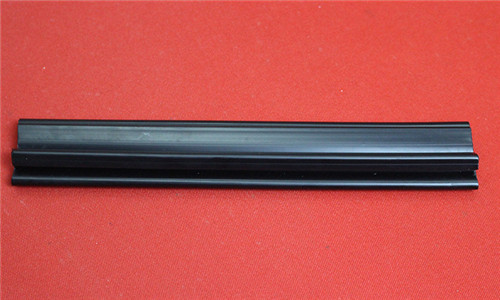
Phone Number :
07 27, 2023

Sports venues are prone to accidents and injuries due to the high intensity and physical nature of sports activities. To address this concern, anti-collision strips have been extensively utilized to protect athletes, spectators, and equipment from potential harm. This article aims to provide a comprehensive evaluation of the role and actual effect of anti-collision strips in sports venues.
Anti-collision strips serve as a fundamental safety measure in sports venues. Their primary purpose is to minimize the risk of injury by cushioning the impact during collisions. These strips are commonly installed on walls, posts, and other stationary objects to provide a physical barrier between athletes and potential hazards. The presence of anti-collision strips encourages participants to perform without fear of severe injury, enabling them to focus on their performance and enhance overall sporting experience.
The effectiveness of anti-collision strips has been extensively studied and proven. Research has shown that these strips effectively reduce the severity of injuries in sports venues. By absorbing and dispersing the impact force, anti-collision strips minimize the likelihood of fractures, cuts, and bruises. Additionally, these strips also protect the surrounding infrastructure, such as walls and equipment, from damage. Overall, anti-collision strips contribute significantly to creating a safer environment for athletes and spectators.
When implementing anti-collision strips, several factors should be considered. Firstly, the material of the strips should be carefully chosen to ensure durability and longevity. High-quality materials such as rubber or foam offer excellent impact absorption capabilities. Additionally, the strips should be securely attached to the surfaces to prevent dislodgment during intense sporting activities.
Furthermore, regular maintenance and inspection are essential to uphold the effectiveness of anti-collision strips. Any signs of wear and tear should be promptly addressed and replaced to ensure optimal protection. Adequate lighting in sports venues is also crucial, as it aids in visibility and helps athletes identify potential collision areas.
The role and actual effect evaluation of anti-collision strips in sports venues highlight their significant contribution to injury prevention and overall safety. By providing a protective barrier and absorbing impact, these strips allow athletes to perform with reduced risk of severe harm, enhancing their confidence and performance. The proper material selection, secure attachment, regular maintenance, and appropriate lighting are essential considerations for optimizing the effectiveness of anti-collision strips. It is evident that the implementation of anti-collision strips in sports venues plays a crucial role in delivering a safe sporting environment for all stakeholders involved.